Al-Arabia – Kata’ib Hezbollah, an Iranian-backed Iraqi militia, issued a statement last week calling for terrorist attacks to be launched against Saudi Arabia.
The militant organization has been central in the proxy conflict between Iran and the US in Iraq, having carried out a series of attacks against US-led forces in Iraq that led to the US retaliating by killing Iran’s Gen. Qassem Soleimani and Kata’ib Hezbollah former leader Abu Mahdi al-Mohandes in January. The group has carried out several missile attacks since, including an attack on a base that killed three US personnel.
And with Iran refusing to drop support for its proxy organizations across the region, Kata’ib Hezbollah is unlikely to fall out of the headlines any time soon.
Here is all you need to know about the group.
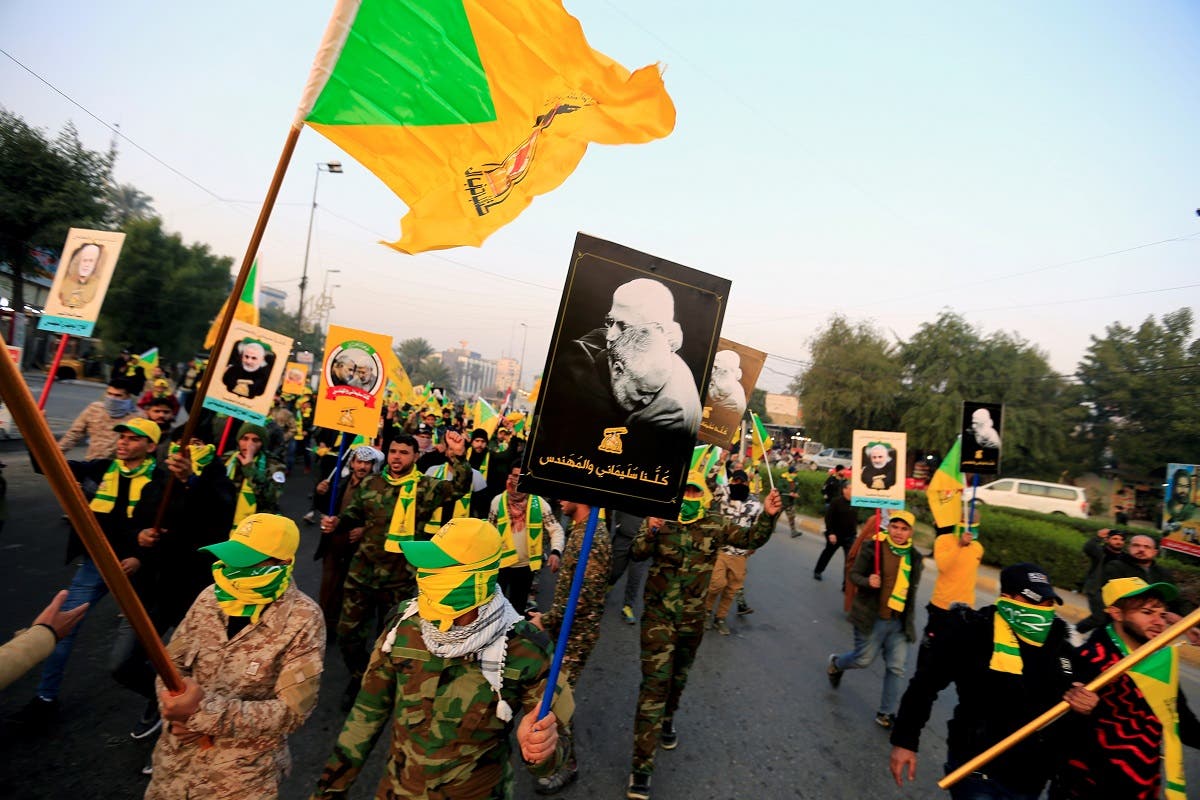
Kata’ib Hezbollah march in Baghdad ahead of the funeral of Abu Mahdi al-Mohandes, January 4, 2020. (Reuters)
Who are Kata’ib Hezbollah?
Kata’ib Hezbollah – or the “Brigades of the Party of God” – is one of the most prominent Iranian-backed Shia militias in Iraq. It was established in 2007, when several Shia Iraqi militias formed an alliance.
Kata’ib Hezbollah initially began operating in the southern parts of Iraq and later extended its activities to the rest of the country and beyond.
On its official website, the militia identifies itself as a “jihadi group that believes in the principles of Islam and fights injustice and oppressors.”
For all the latest headlines follow our Google News channel online or via the app
Kata’ib Hezbollah, which was designated by the US as a foreign terrorist organisation in 2009, is estimated to have between 3,000 to 7,000 fighters, according to unofficial figures.
In 2014, Kata’ib Hezbollah and six other Shia militias formed the Iran-backed Popular Mobilization Unit (PMU) umbrella militia group.
The PMU was established based with a fatwa (religious edict) by Iraq’s most senior Shia cleric Grand Ayatollah Ali al-Sistani to fight ISIS. The militia has its own command structure, and is currently headed by Abu Fadak al-Mohammadawi, a former secretary-general of Kata’ib Hezbollah.
Read more: Meet ‘the uncle’ Abu Fadak, the new head of Iran-backed PMU militias in Iraq
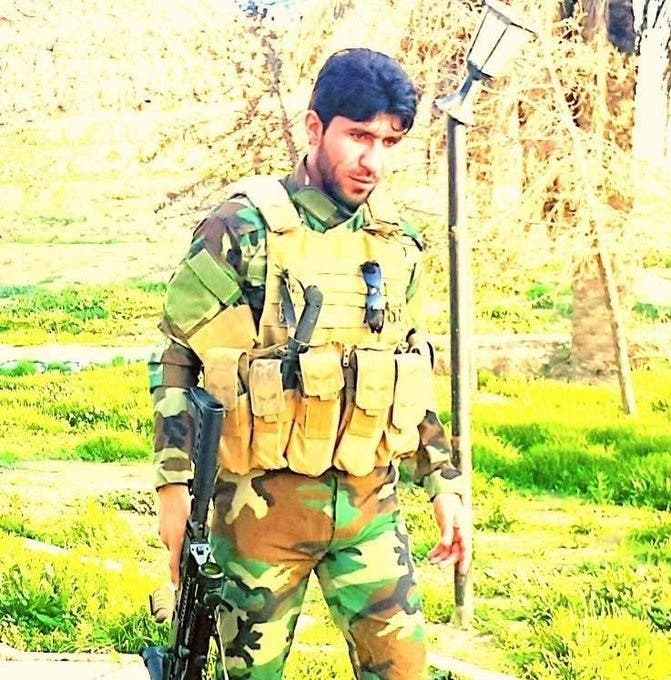
Abu Fadak ‘the uncle’ al-Mohammadawi, the leader of the PMU umbrella group of militias, as a young man. (Supplied)
Leadership
Kata’ib Hezbollah is currently headed by Ahmad al-Hamidawi, who the US designated as a global terrorist in February.
Al-Hamidawi succeeded Abu Mahdi al-Mohandes, who was killed alongside Iran’s Quds Force commander Qassem Soleimani in a US airstrike in Baghdad in January.
Read more: Kata’ib Hezbollah commemorate Mohandes, Soleimani’s deaths with Trump effigies
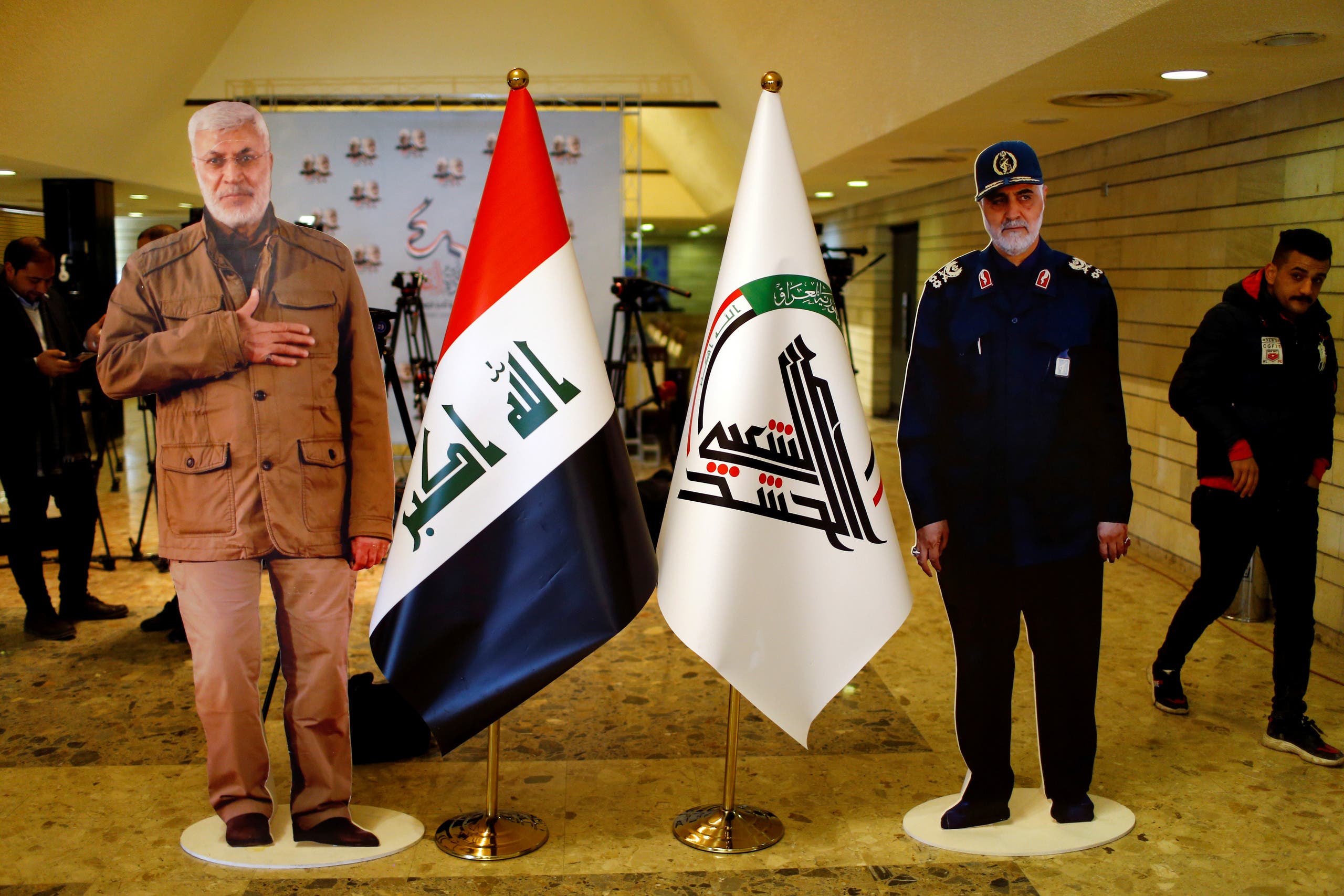
Cardboard cutouts of the Qassem Soleimani and Abu Mahdi al-Mohandes are seen during the forty days memorial in Baghdad, Iraq, February 11, 2020. (Reuters)
Ties with Iran
Kata’ib Hezbollah has strong sectarian, ideological and financial ties with Iran.
On its website, the militia states that it believes Iran’s political system is the “best way to achieve the rule of Islam” during the absence of the 12th Imam and Shia Messiah, al-Mahdi.
“The establishment of the Islamic Republic in Iran is an essential stage in preparing for the state of divine justice” that al-Mahdi would bring about once he reappears, Kata’ib Hezbollah says on its website.
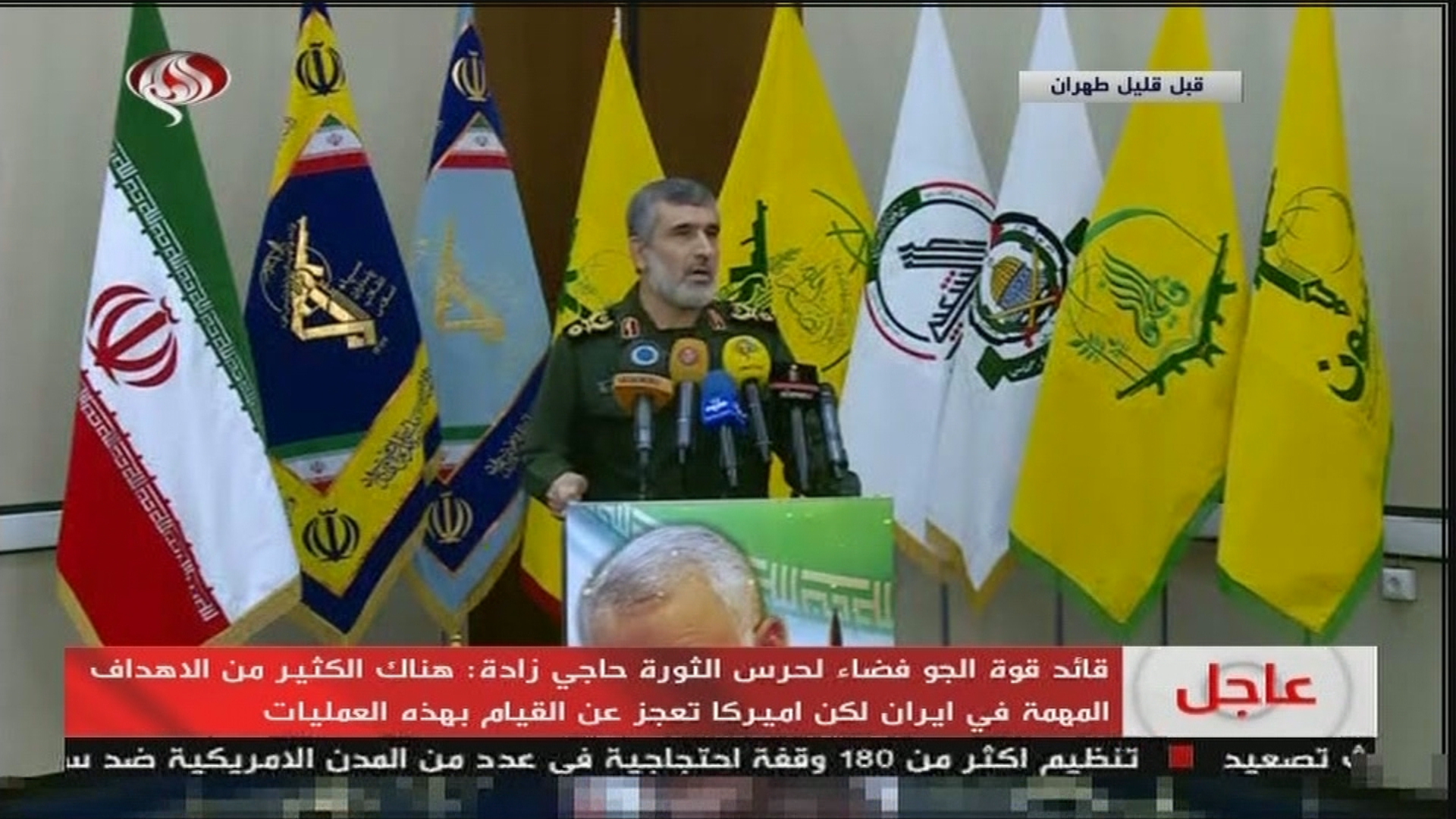
IRGC airforce commander Amir Ali Hajizadeh appears on state TV in front of proxy flags including the PMU militia flag, January 9. (Screengrab from Twitter)
The militia enjoys Iranian funding, armament, training, and support, and aims to dominate Iraq’s political scene in a manner that suits its pro-Iranian political and ideological orientations.
Some of Kata’ib Hezbollah’s goals which are listed on its official website include “the pursuit of a political majority that is able to bring about fundamental changes in the constitution and the political process” as well as seeking to “invest in competent, honest and courageous individuals and getting them to decision-making positions.”
Besides enjoying significant support from Tehran, Kata’ib Hezbollah has also received military training from the Iran-backed Lebanese Hezbollah inside Iran, according to the US treasury.
The militia stresses the need to fight countries Iran considers as enemies, such as the US, Saudi Arabia and their allies.
Operations inside Iraq
Kata’ib Hezbollah’s website has a “jihadi operations” section on its website which includes hundreds of videos documenting attacks carried out by the militia against US and coalition forces in Iraq over the years.
On December 27, 2019, Kata’ib Hezbollah conducted a deadly strike on an Iraqi military base near Kirkuk using rockets, killing a US civilian contractor.
Days later, supporters of the militia attacked the US embassy in Baghdad, torching parts of the compound, smashing security cameras, and hurling stones. On January 3, Washington carried out a drone strike outside Baghdad International Airport, hitting the two-car convoy in which Soleimani and al-Mohandes were travelling.
Kata’ib Hezbollah is also accused of being behind the massacre of Iraqi demonstrators protesting corruption and Iran’s meddling in their country in December 2019. At least 24 protesters were killed and more than 120 were injured in the attack.
Additionally, Kata’ib Hezbollah is accused of committing human rights violations motivated by sectarian hatred against Sunni Iraqi civilians after reclaiming Sunni-dominated areas in the country from ISIS.
Rights group also say that Kata’ib Hezbollah, as well as other militias that are part of the Iran-backed PMU militia group, have tortured, killed, abducted and destroyed the homes of Sunni civilians in Iraq.
In 2013, the militia was directly involved in an attack on Camp Ashraf in Iraq which hosted members of the Iranian opposition group Mojahedin-e Khalq (MEK). Over 50 MEK members were killed in the attack.
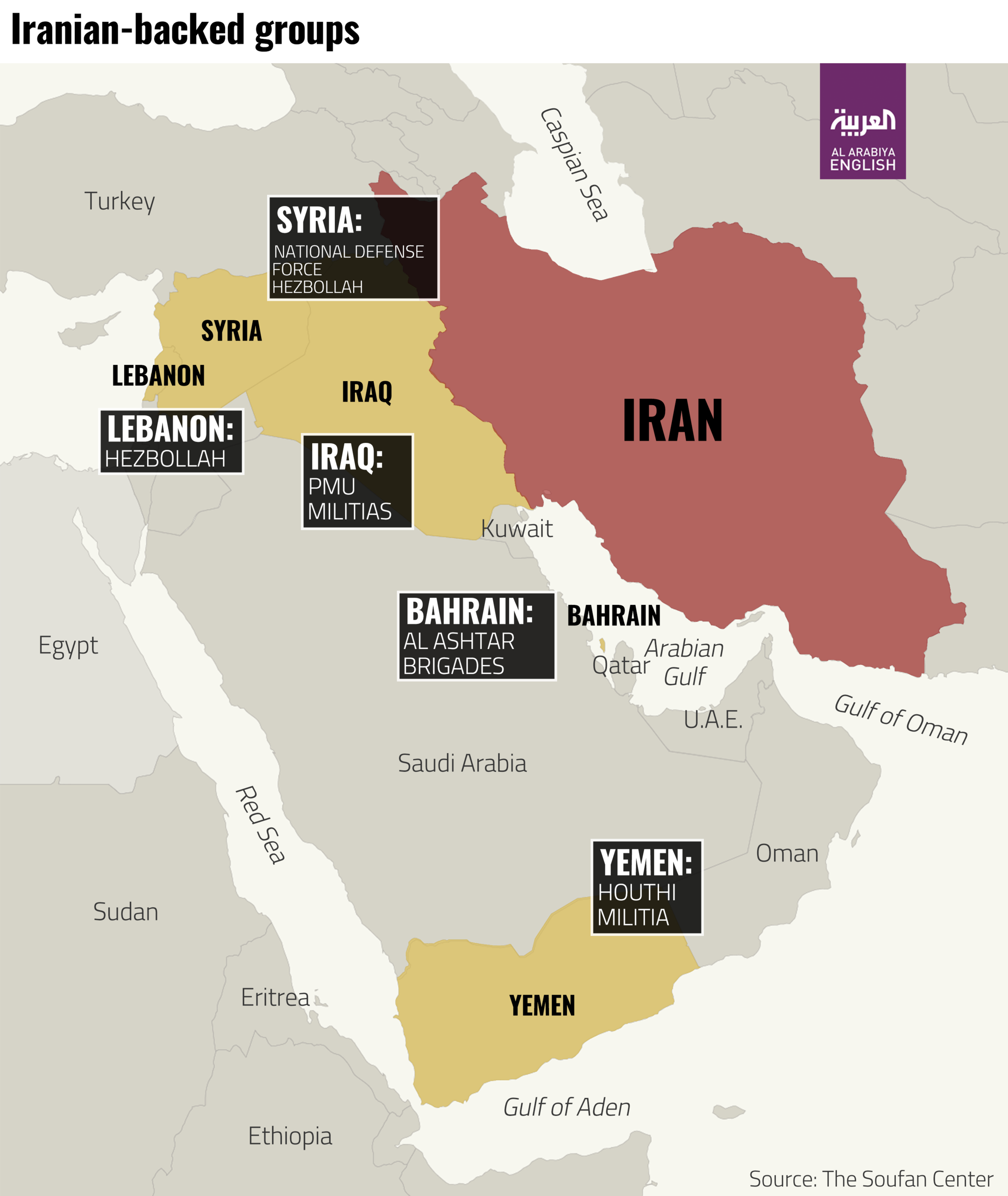
A map detailing some of the most prominent Iranian proxy organizations.
Presence outside of Iraq
Kata’ib Hezbollah believes it is obligated to defend Iran’s interests not only in Iraq, but wherever possible. Based on this belief, the militia has fought alongside the forces of the regime of President Bashar al-Assad against Syrian rebels.
In 2015, Kata’ib Hezbollah allegedly sent 1,000 fighters to Aleppo in Syria in response to a direct order from Soleimani.
At the time, the militia was led by al-Mohandes, who considered himself a soldier of Soleimani. Asked about the nature of his relationship with Soleimani, al-Mohandes said on Iranian state TV in 2017 that his relationship with Soleimani is that of a soldier with a superior officer. “I am proud to be a soldier of Haj Qassem.”
Read more: Iranian IRGC commander Abolfazl Sarlak killed in Syria
Kata’ib Hezbollah is also suspected of drone attacks on Saudi Arabia’s oil industry in 2019.
On May 14, 2019, Saudi Arabia announced that two oil-pumping stations for the East-West pipeline had been hit by explosive-laden drones, calling the attack “an act of terrorism” that targeted global oil supplies.
Initially, Yemen’s Iran-backed Houthi militia claimed responsibility, but US officials familiar with the intelligence on the May drone attacks concluded that the attacks originated in southern Iraq.
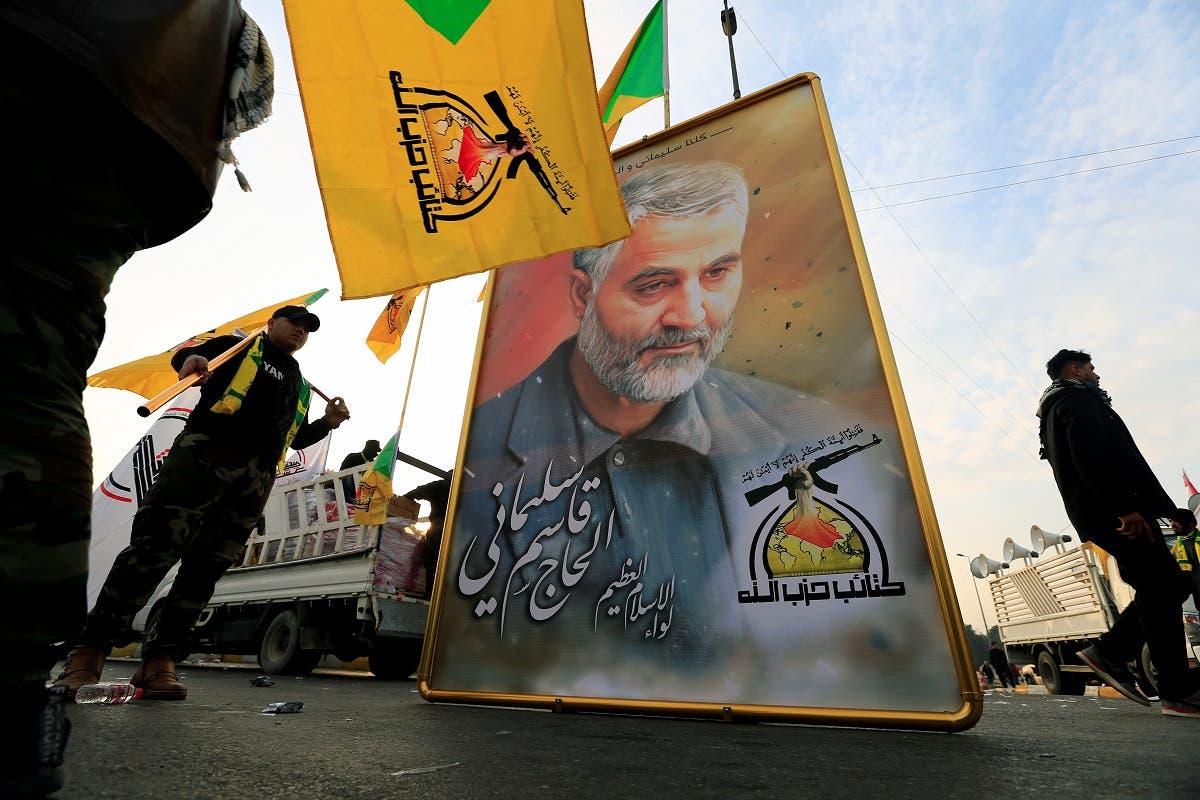
Kata’ib Hezbollahat the funeral for Abu Mahdi al-Mohandes, in Baghdad. (Reuters)Last Update: 05:38 KSA 08:38 – GMT 05:38
 Shabtabnews In this dark night, I have lost my way – Arise from a corner, oh you the star of guidance.
Shabtabnews In this dark night, I have lost my way – Arise from a corner, oh you the star of guidance.


